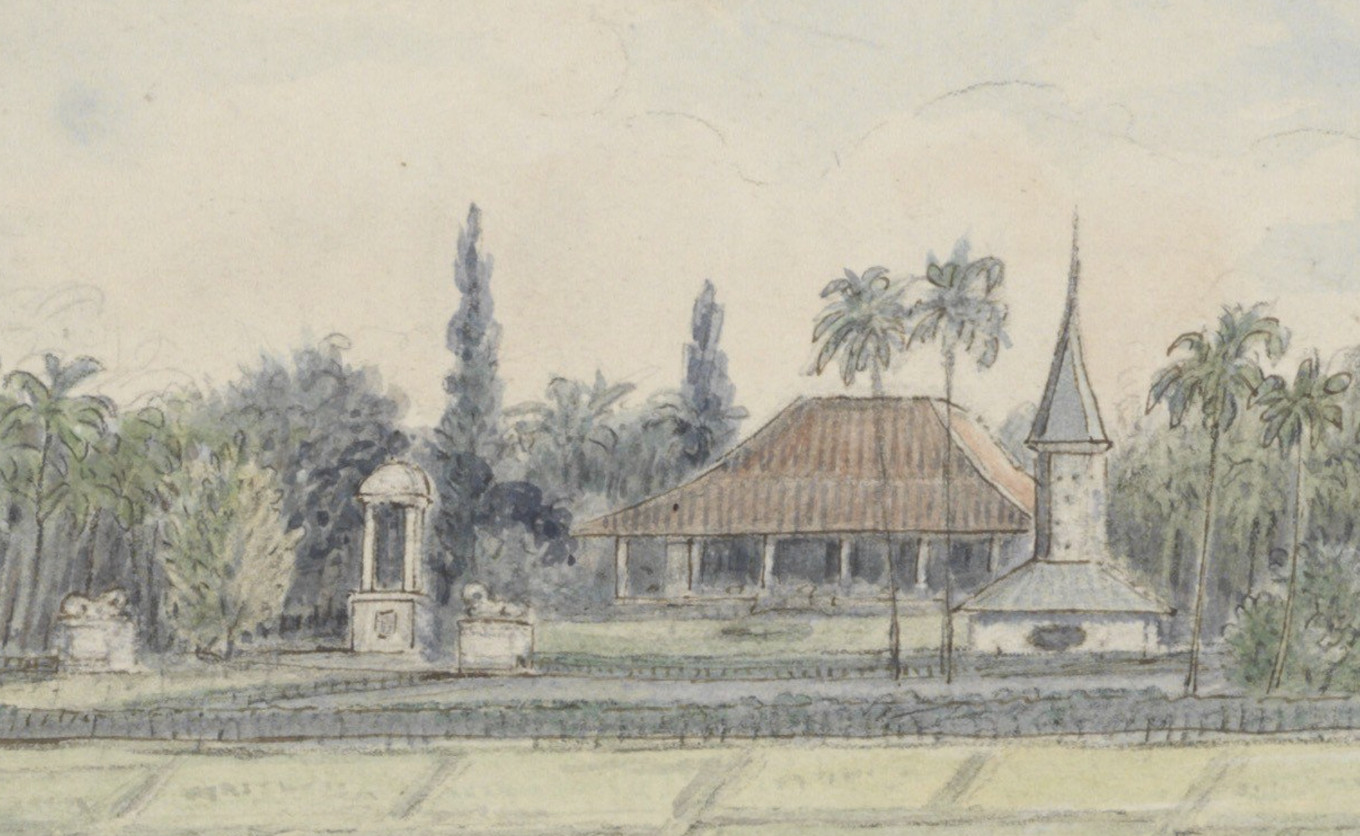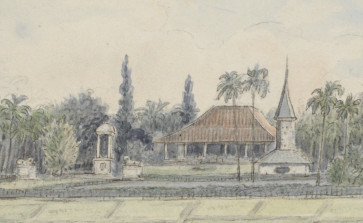Popular Reads
Top Results
Can't find what you're looking for?
View all search resultsPopular Reads
Top Results
Can't find what you're looking for?
View all search resultsHow Cilebut’s 18th-century bell tower survives the test of time
Change text size
Gift Premium Articles
to Anyone
J
ust 200 meters west of the busy Cilebut train station, north of Bogor, West Java, are the remains of a bell tower belonging to the former Cilebut country house, which was demolished nearly a century ago.
In an ever-changing and developing environment, it is extraordinary that an unprotected and more than 250-year-old relic has managed to survive. Nonetheless, the bell tower is deteriorating and, unless serious preservation measures are taken, is at risk of collapsing or demolition.
The first mention of the Cilebut estate (then spelled as Tjileboet) dates from 1752 when then-governor general Jacob Mossel (1704-1761) subdivided his large Buitenzorg (Bogor) land. The Cilebut land was sold for 2,000 Rijksdaalder (Ringgit) to a certain Major Paridan, who had the title head of the West Javanese.
In 1820, Willem Vincent Helvetius van Riemsdijk Jr (1784-1848) purchased Cilebut. He was the son of the wealthy Van Riemsdijk, a landowner of Ciampea near Bogor. When Van Riemswijk Jr passed away in 1848, his widow Wilhelmina Reynira Martens married my ancestor Jannus Theodorus Bik (1796-1875). After she died in 1862, Bik purchased Cilebut. At around the same time, Bik also became the owner of Ciloar (near Bogor), Tanah Abang in Central Jakarta, and a few years later, he also bought land in Cisarua.
The Cilebut estate consisted of 850 hectares (ha) of sawah (rice fields), a small Liberia coffee plantation and some 50 cows that produced milk and butter for residents nearby Bogor.
Bik was a draftsman by trade and, from 1816 to 1824, a member of the expedition of professor Caspar Reinwardt (1773-1854), who in 1817 established the Kebun Raya (Botanical Gardens) in Bogor. In 1850, Bik made a detailed drawing of the Cilebut country house, which had sweeping views toward Gunung Salak and Gunung Gede-Pangrango in the south.
In this drawing, we can see the bell tower or slave bell. It was a six-meter tall ornate building with four pillars, a dome and a copper or bronze bell inside. The long working days began and ended with the ringing of this bell. Failure to start the shift on time could lead to punishment for the enslaved people. Slavery in the Dutch East Indies (Indonesia’s name during the Dutch colonization) was abolished in 1860. However, the bell tower was likely still used afterward as a call for the paid workers on the estate.



















